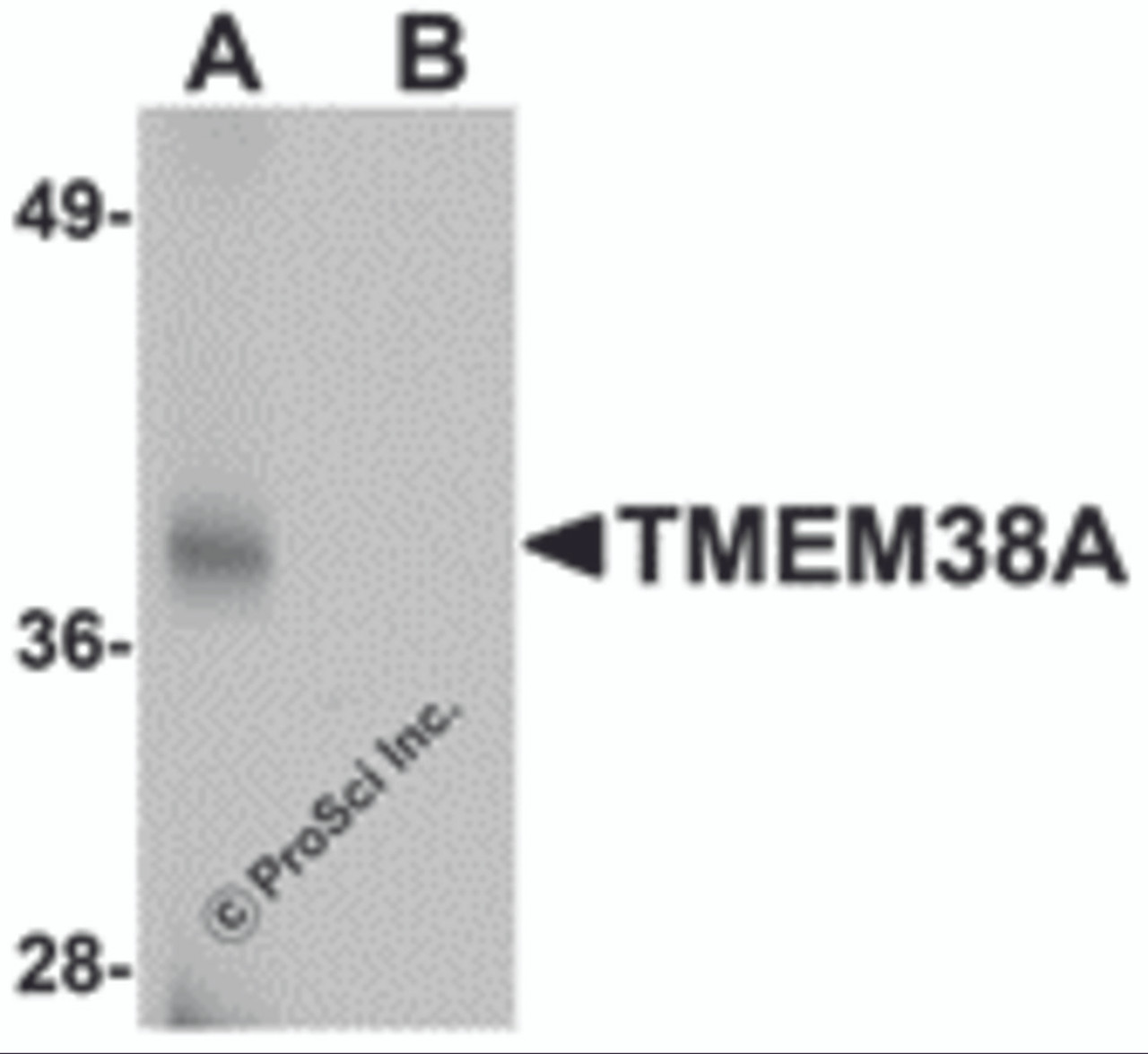Product Description
TMEM38A Antibody | 5521 | ProSci
Host: Rabbit
Reactivity: Human, Mouse, Rat
Homology: Predicted species reactivity based on immunogen sequence: Rabbit: (94%) , Bovine: (94%) , Chicken: (76%)
Immunogen: TMEM38A antibody was raised against a 17 amino acid synthetic peptide from near the carboxy terminus of human TMEM38A.
The immunogen is located within the last 50 amino acids of TMEM38A.
Research Area: Signal Transduction
Tested Application: E, WB, IF
Application: TMEM38A antibody can be used for detection of TMEM38A by Western blot at 1 μg/mL. For immunofluorescence start at 20 μg/mL.
Antibody validated: Western Blot in rat samples and Immunofluorescence in mouse samples. All other applications and species not yet tested.
Specificiy: N/A
Positive Control 1: Cat. No. 1467 - Rat Skeletal Muscle Tissue Lysate
Positive Control 2: N/A
Positive Control 3: N/A
Positive Control 4: N/A
Positive Control 5: N/A
Positive Control 6: N/A
Molecular Weight: N/A
Validation: N/A
Isoform: N/A
Purification: TMEM38A Antibody is affinity chromatography purified via peptide column.
Clonality: Polyclonal
Clone: N/A
Isotype: IgG
Conjugate: Unconjugated
Physical State: Liquid
Buffer: TMEM38A Antibody is supplied in PBS containing 0.02% sodium azide.
Concentration: 1 mg/mL
Storage Condition: TMEM38A antibody can be stored at 4˚C for three months and -20˚C, stable for up to one year. As with all antibodies care should be taken to avoid repeated freeze thaw cycles. Antibodies should not be exposed to prolonged high temperatures.
Alternate Name: TMEM38A Antibody: TRICA, TRIC-A, Trimeric intracellular cation channel type A, Transmembrane protein 38A
User Note: Optimal dilutions for each application to be determined by the researcher.
BACKGROUND: TMEM38A Antibody: TMEM38A and TMEM38B are two recently identified trimeric intracellular cation (TRIC) channel subtypes. TMEM38A is preferentially expressed in excitable tissues such as striated muscle and brain and localizes to the sarcoplasmic reticulum (SR) in muscle tissues. Mice deficient in both TMEM38A and TMEM38B suffer embryonic cardiac failure; the cardiac myocytes display severe dysfunction in SR Ca2+ handling, weakened Ca2+ release, and reduced K+ permeability indicating that the TRIC cation channels are likely to act as counter-ion channels that function in synchronization with Ca2+ release from intracellular stores. Other experiments have shown that TMEM38A and TMEM38B can act with junctophilin proteins to support efficient ryanodine receptor-mediated Ca2+ release in muscle cells.
 Euro
Euro
 USD
USD
 British Pound
British Pound
 NULL
NULL










